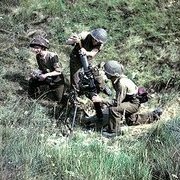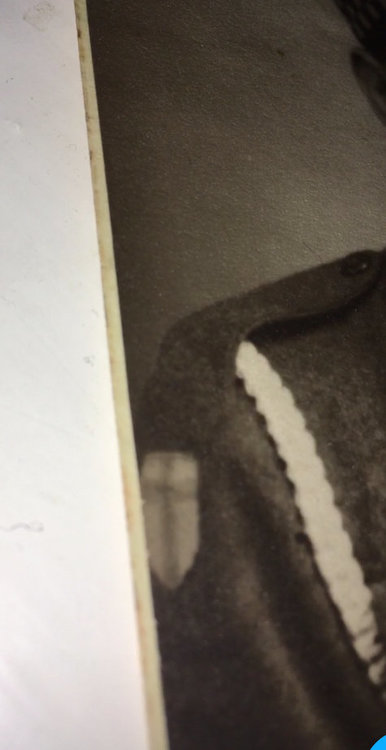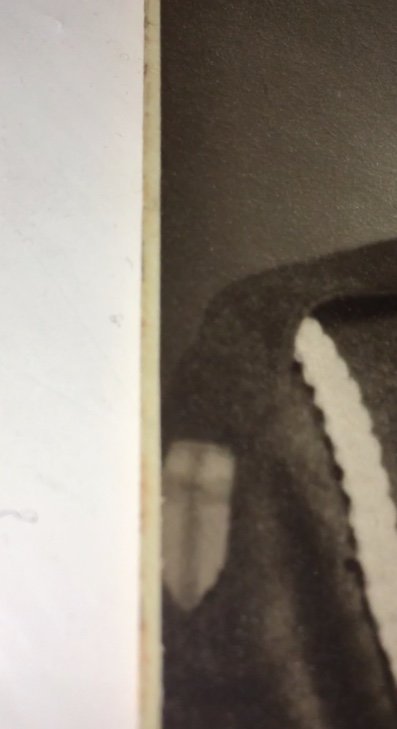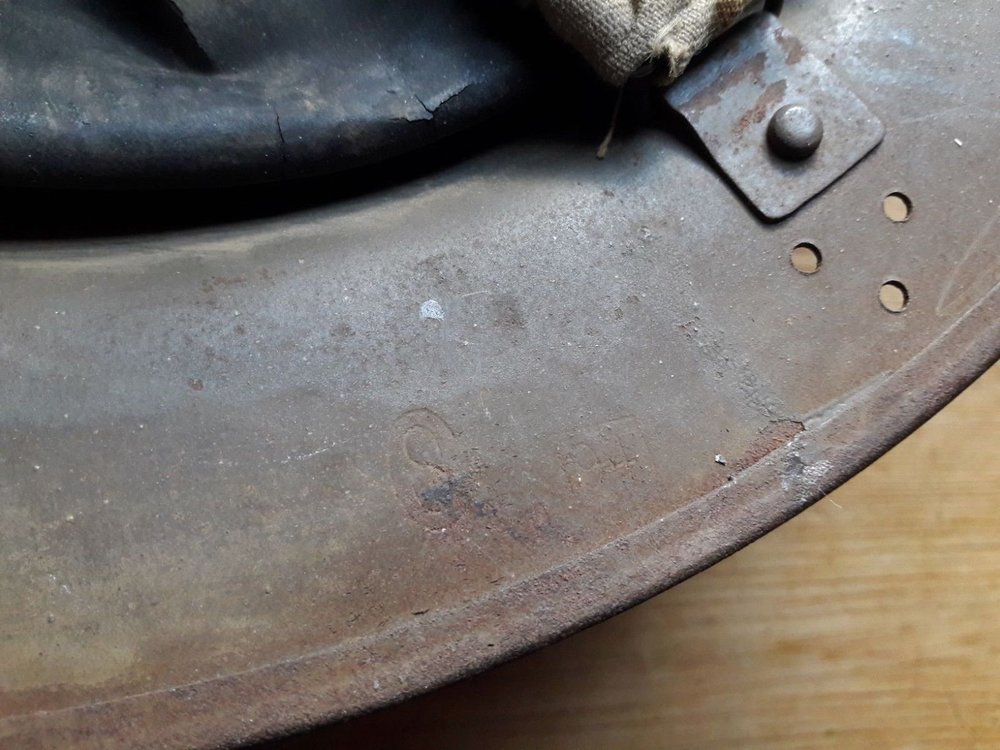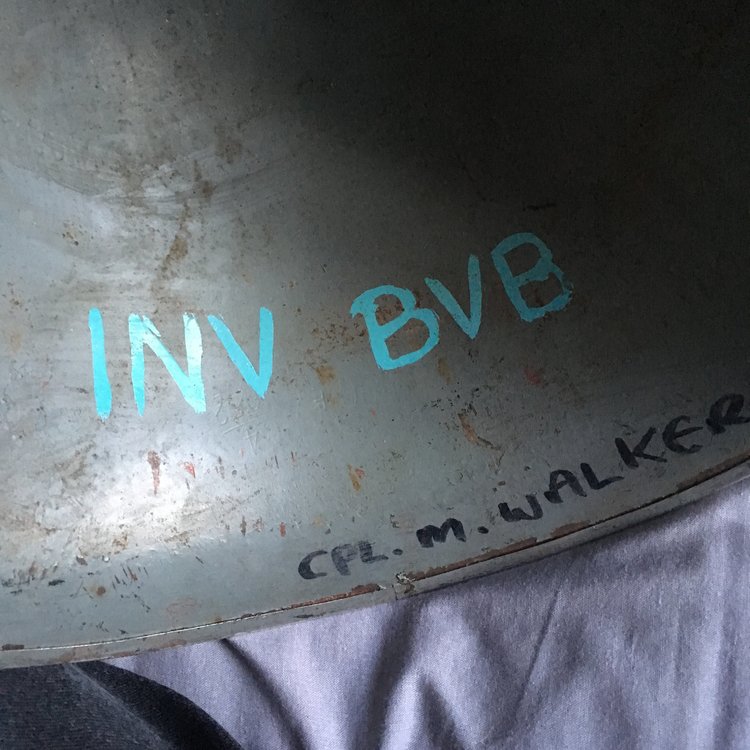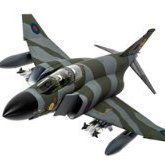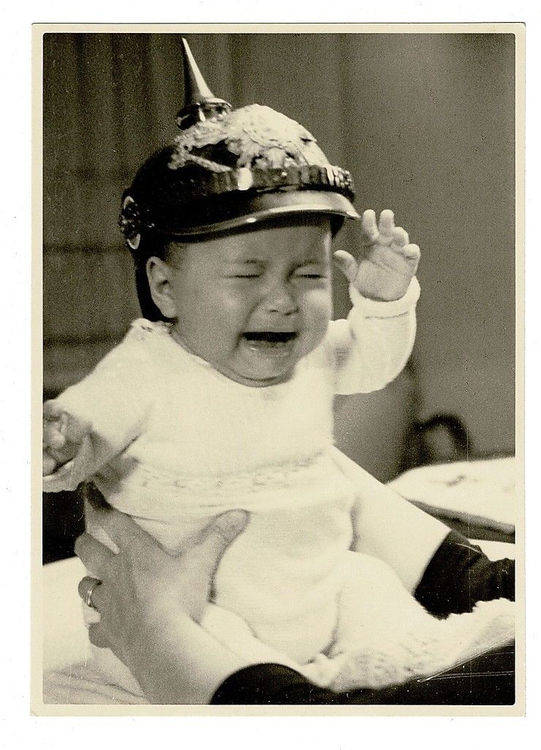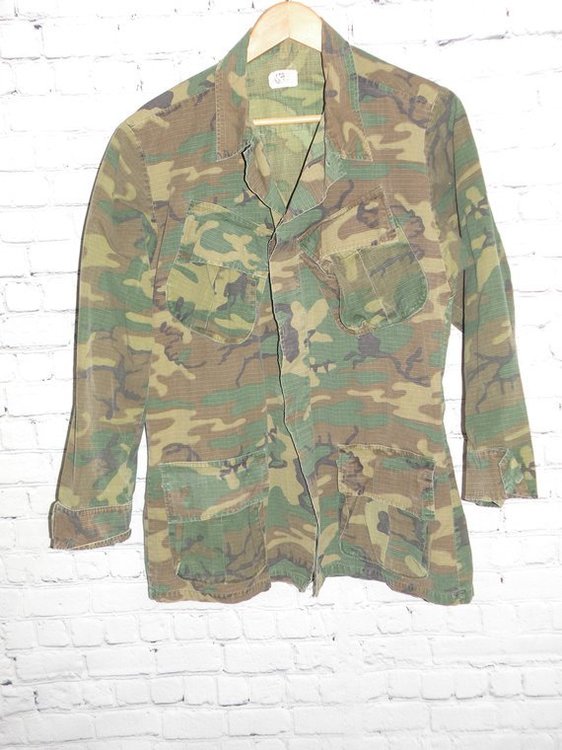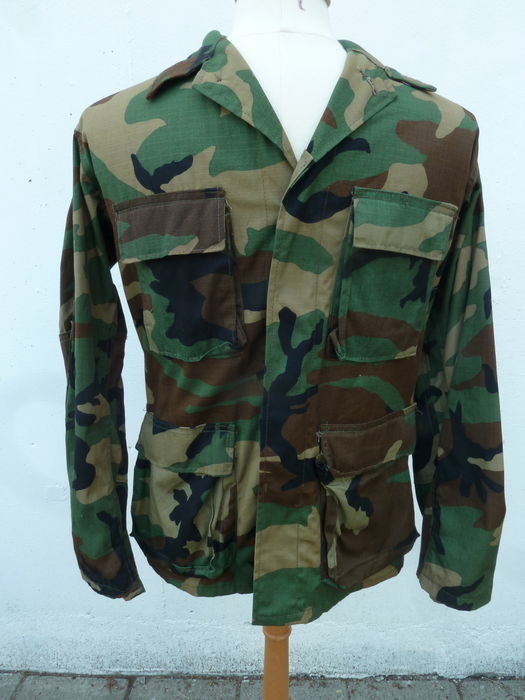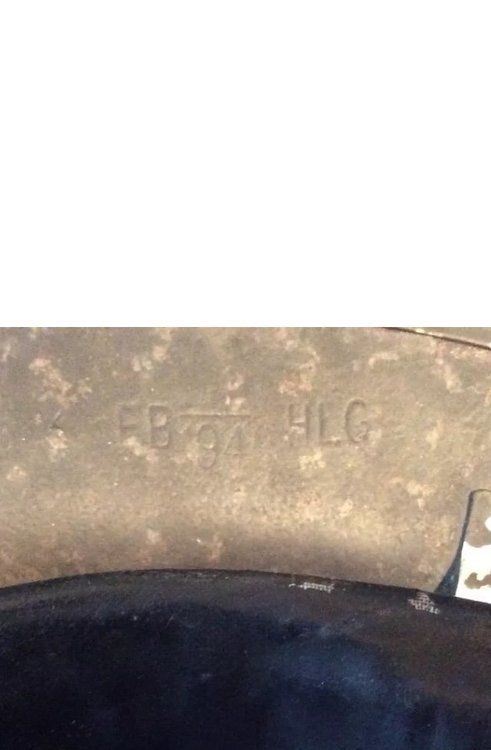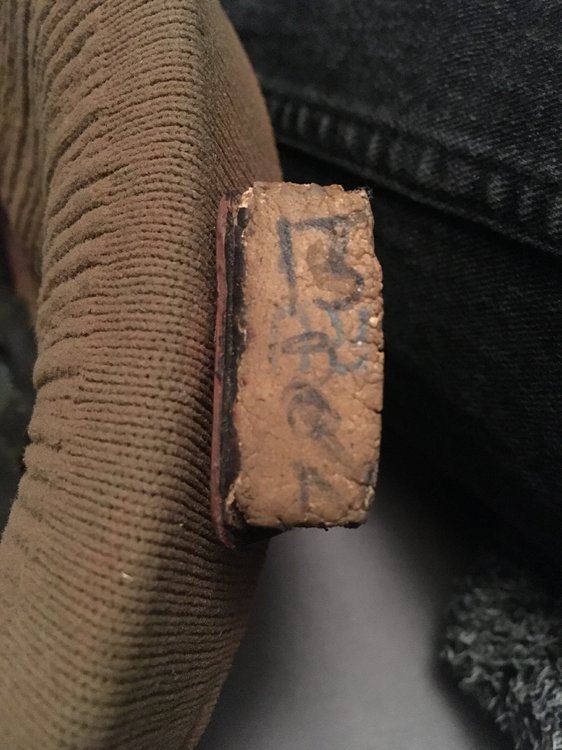Leaderboard
Popular Content
Showing content with the highest reputation on 24/12/18 in all areas
-
3 points
-
Jack, is it EB or FB can't make it out properly.?3 points
-
Hi Tommy, yes there certainly seems to be a cross on the insignia, maybe it is First Army?3 points
-
Yes the photo I uploaded doesn't show the patch very clearly I've added another two to this which hopefully show what I believe to be the sword however it is still not as clear as I hoped. I had never heard of photos being edited in this way before, its not to my taste as I think photos should be left unedited as to show things exactly how they were but each to their own. He did survive the war so I that makes this less likely but I guess still could of happened. Thanks for the help, hopefully the photos clear this up a little, Jack You can hopefully see the hilt of the sword in the centre of the cross and the faint line of the blade going down the centre.3 points
-
2 points
-
Not seen that mark before Jack, a lot of these helmet manufactures used more than one stamp mark, the nearest I can think of, is it might be a Fisher & Ludlow of Birmingham stamp mark. But it's only a guess, it could be a lesser known Private maker you've found. Here's a lesser known stamp mark for Clydesdale Stamping Co. who used a letter S within a letter C stamp mark.2 points
-
2 points
-
It could be from RAF Inverness built in 1940 which helped defend Scotland, Northern Ireland and Northern England, but not sure what the BVB would be.2 points
-
It does look like 8th Army with the yellow and white shield, I'm struggling to see a sword. Another possibility is that the shield was added by the photographer, I have seen this before especially with German photos when an Iron cross was added for example. If the badge was added by the photographer to denote his service in the 8th Army then perhaps this is why the scalloped top was left out. Here is a German officer with Knights Cross added, this was commonly done by the photographer to update photos they had of the recipient, when it would be too difficult to obtain an up to date photo with the new awards. You can also see this on photos of individuals who received awards but were killed shortly afterwards when a photo of them with the new award was never taken. So perhaps this relative sadly did not survive the war and fell when serving with the 8th Army.2 points
-
Another thing that been puzzling me is what this stands for: INV BVB Its on the inside of a MK IV shell that appears to of been painted light blue for the raf but then over painted red on the outside. The previous owner thought it was possibly for fire crews at the airfield but I haven’t been able to prove that as of yet. Anyway I haven’t been able to work out what it stands for so if anyone knows or wants to have a guess I’d appreciate it. Regards Jack2 points
-
Thanks a lot, I hadn’t thought of the 21st. It turns out the Argyll’s were all over the place during the war and many of the battalions suffered heavy casualties leading them to being absorbed and re formed a lot and then being moved all over the place again, so that makes tracing the patch a lot harder but I’ll have a proper read later today and see if I can rule out a few options. Thanks again, Jack2 points
-
Two examples of Police buckles, one of Third Reich, the other Hamburg Police, postwar. Both of pressed steel with a matt silver finish. The Hamburg police buckle is believed to be originally of the pattern worn in the Weimar period, before the new 3rd Reich uniform was introduced in mid to late 1930s. However, again worn postwar, and even up till a few years ago still worn. I have even seen an example with a 1940 dated leather tab, probably applied postwar from surplus stock. The first buckle came from the estate of a well-known British intelligence officer, who made a collection of all insignia for education for identification purposes, bad postwar storage has led to some rusting. Unfortunately, both without tabs. Note, these two buckles are of very similar material and construction, both iron and silver finish is very similar. Many years ago I had a large quantity of Hamburg Police buckles and also the belts, which were all wartime examples.1 point
-
1 point
-
Sorry it’s FB, should of made that clearer1 point
-
1 point
-
Hi Paul, yes it's confusing, what you have is Brown Dominant Highland ERDL pattern, also known as the Leaf pattern developed by the United States Army at its Engineer Research & Development Laboratories (ERDL) in 1948 and not used until the Vietnam War. The Woodland Pattern was issued to the United States Armed Forces from 1981 so with yours being dated 1978 it has to be the Brown Dominant Highland ERDL pattern. Woodland pattern is identical to ERDL, but is printed from an enlargement of the original. The Woodland pattern was enlarged and the borders of the splotches were re-drawn to make them less regular. Brown Dominant Highland ERDL pattern Woodland pattern1 point
-
Yes, Fortunately I do have the belts that came with some of my RAD buckles and a few are R.A.D. BA marked or marked with a RAD Gau. XXXII stamping for example..1 point
-
Do you also have some belts for these? It's a shame that so many belts have landed on the scrapheap and only buckles being cherished. There used to be tons of good belts available, now you only occasionally see a poor example.1 point
-
1 point
-
The Competitor of the Alster Touristik is Käp'n Matthias Kruse, who runs his own vintage steam driven Alster Ferry, the "Sankt Georg" Matthias originally learnt the "ropes" from Hansi Baxmann, and later set up his own business, buying and restoring the "St. Georg" from Dresden after the Wall came down. The "St.Georg" is the only steam-powered craft on the Alster. A local news article from 19.6.2013.1 point
-
1 point
-
Thanks for all the replies, I looked into it possibly being something beginning with s garrison artillery but from what I've read the term Garrison artillery officially went in 1924. I haven't been able find a reference of it being kept on by the former batteries, so probably isn't the case here, but I did find some interesting articles about the Royal Garrison Artillery during the first world war so I had some fun looking. 13 SQN is the most plausible at the moment so that shall be the working theory. I've attached a better photo but the writing still isn't much clearer. Thanks for all the help, much appreciated, Jack1 point
-
on the second picture, Dickens, looks live DVR, Driver, on the other parts, D Troop, - 13. SQN or SGA ? without doubt1 point
-
77 years ago today the King George V class Battleship HMS Prince of Wales was sunk in the South China sea along side the Battlecruiser HMS Repulse. HMS Prince of Wales had only a short service from being completed in march 1941 to being sunk on the 10th of December 1941, however undertook many Different roles: Pursuit of the Bismarck and Prinz Eugen, North Sea, May 1941 Transport for churchill, Atlantic, August 1941 Convoy escort, Mediterranean, September 1941 Interception of Japanese forces near malaya, South China Sea, December 1941 HMS Repulse Had been in service since August 1916 and had taken part in: Second battle of Heligoland Bight, North sea, November 1917 Special service squadrons round the world cruise, International, 1923-24 Shipping escort during spanish civil war, International, 1936-39 Norwegian campaign, North/norwegian sea, April-June 1940 Troop convoy escort, Atlantic ocean, August-October 1941 On the morning of December 10th the Repulse and Prince of wales were looking for Japanese forces related to the landings at Kuantan. 05:15 -They spotted objects on the horizon, thinking these to be japanese troop ships moved towards them, these later turned out to be trawlers. 10:00 -Another british ship the Tenedos reported being under attack from Japanese aircraft. 11:13-HMS Repulse was attacked by bombers suffering only one minor hit. 11:40 -17 enemy bombers attacked both ships, 8 torpedos were launched at the PoW evasive action was taken and all but one avoided. It hit the the point where the propeller shaft exited the ship. The turbine was got turning again but as the ship gained speed the water tight gasket failed flooding the rear port side of the ship and causing her to list 11°. 12:20-26 more torpedo bombers attacked the two ships hitting the PoW another 3 times and the Repulse who had dodged 19 torpedos up until this point 4 times in quick succession. Her crew began to abandon ship 12:33-HMS Repulse capsized and sank with the loss of 508 of 967 crew. 12:41-The PoW was still under attack with one bomb going through the deck and hitting the makeshift hospital below. HMS Express pulled alongside the sinking ship and began to take the crew. 327 men were lost. 13:30-Both ships had sunk. The survivors were rescued by HMS Express and HMAS Vampire Here is a quote from Henry Leach, son of Captain Leach of the PoW. It shows how both Captain Leach and Captain Tennant understood the dangers of the mission they were undertaking: https://www.forcez-survivors.org.uk/biographies/princecrew/leach.html Here is the story of the sinking of the Prince of Wales told by R V Ward a survivor of the events that day: https://www.bbc.co.uk/history/ww2peopleswar/stories/79/a4217979.shtml1 point
-
Originally the carrier Illustrious was going to accompany task force Z but it ran aground before the force was assembled. No. 453 squadron RAAF was available for close air cover however were not kept in contact and were only called by repulse an hour into the attack.The reasons for this are not known but usually attributed to the fact that no capital ship had ever been lost to an attack from the air before so it was thought that they were to a certain extent invulnerable to fatal damage from air attack. As well as the belief that Japanese planes could not operate effectively so far away from land, many RN officials at the time were in a wre of the quality of Japanese torpedo bombers. The PoW was also fitted with the most advance anti-air systems at the time with the High Angle Control System which provided long range radar assisted AA fire. The HACS had been used to great effect earlier in August and September 1941. This lead to the belief that PoW was self sufficient against aircraft however due to the heat of Malaya this system was not fully functioning.1 point
-
Very good stories. With the lack of an aircraft carrier escort, the two vessels obviously had no chance against overwelming numbers of attacking aircraft. Why did they send them without support?1 point
-
1 point
-
Fritz, slight correction, The broach technically is for the "Weiblicher Arbeitsdienst" or old "Frauenarbeitsdienst" but is most recognized as the "Arbeitsdienst fur die weibliche Jugend " or RADwJ for short. There were several makers including Assman, Gustav Brehmmer, and Deumer. The cloth cap insignia " Mutzenabzeichen " was produced by Gunther & Windthrath GmbH Wuppertal and there are six known makers of this type, to note the sleeve shield or "Dienstellenabzeichen" was probably manufactured by Gunther & Windthrath ( G&W ) as well. I look forward to conversations in the future. Gwar1 point
-
An old photo of the British WW1 items I had. The steel helmet was all complete, and with 1916 War Office stamp. Uniform and all web equipment in photo, side pack (haversack) and complete water bottle, as well as the trousers and puttees. Never had the boots. Both the soft field cap with white cotton lining, dated 1922, the other stiffened cap with a black oilcloth liner. There are also a few French items of WW1 - a Képi for a captain of the 14. Regt. d'Hussards, silver trim. An artillery steel helmet.1 point
-
Quote: The tunic below would probably have been worn in South East Asia but as in my uncles case the Cameronians also fought in... - bad enough fighting in any war, but I wouldn't want to be facing the Japanese..... although I once did, had a Japanese girlfriend many, many years ago.... (she was nice though)1 point


